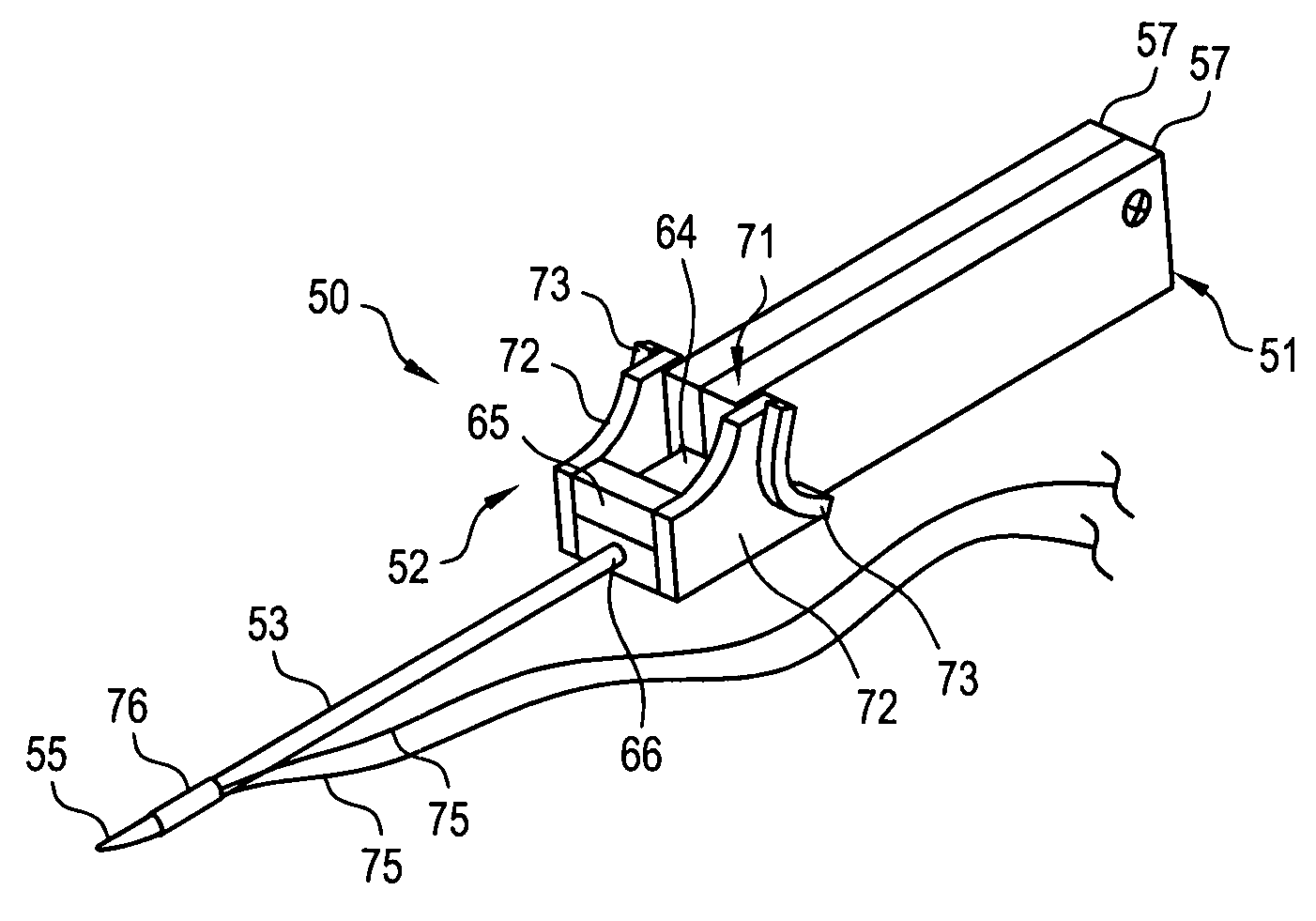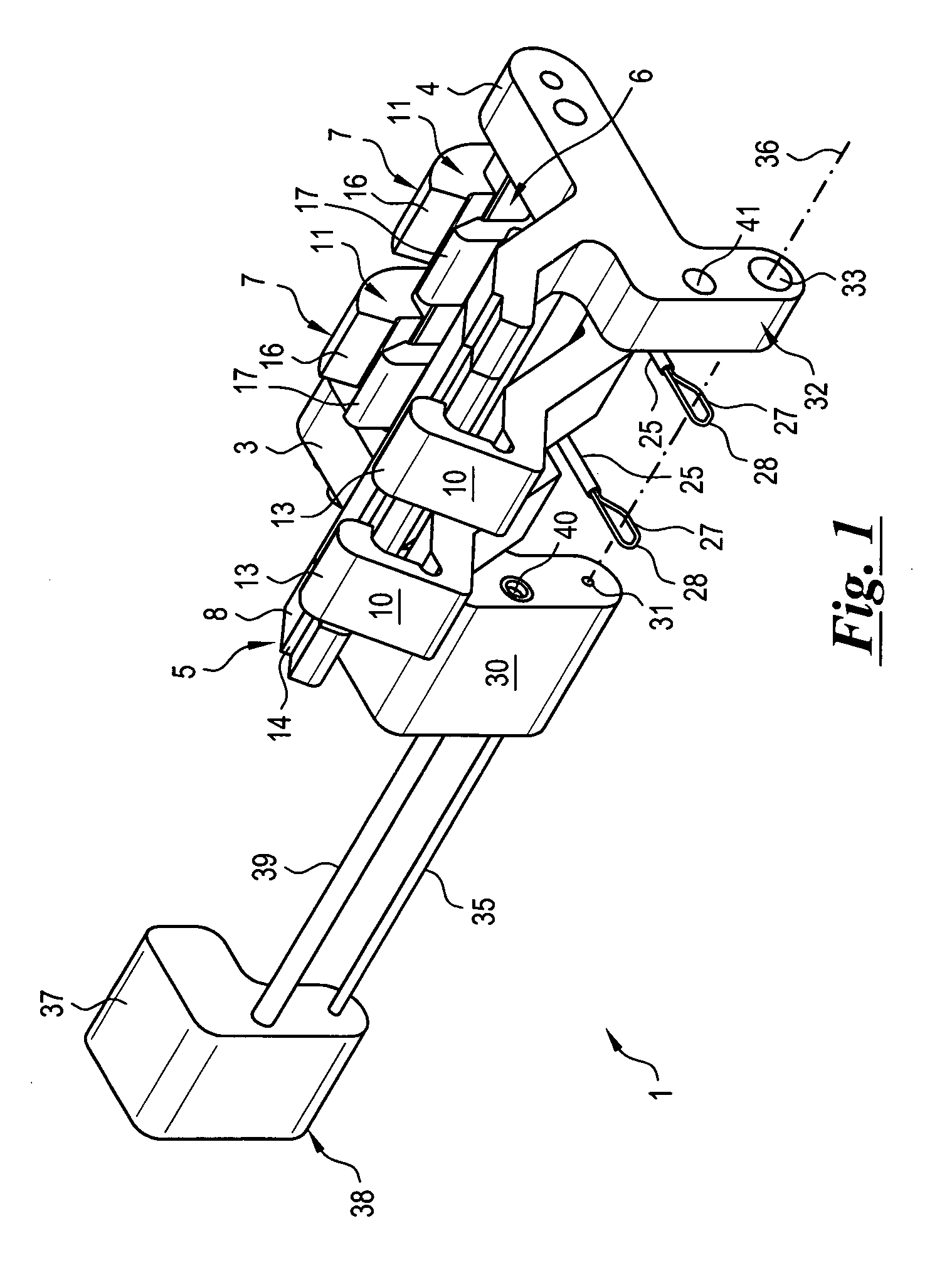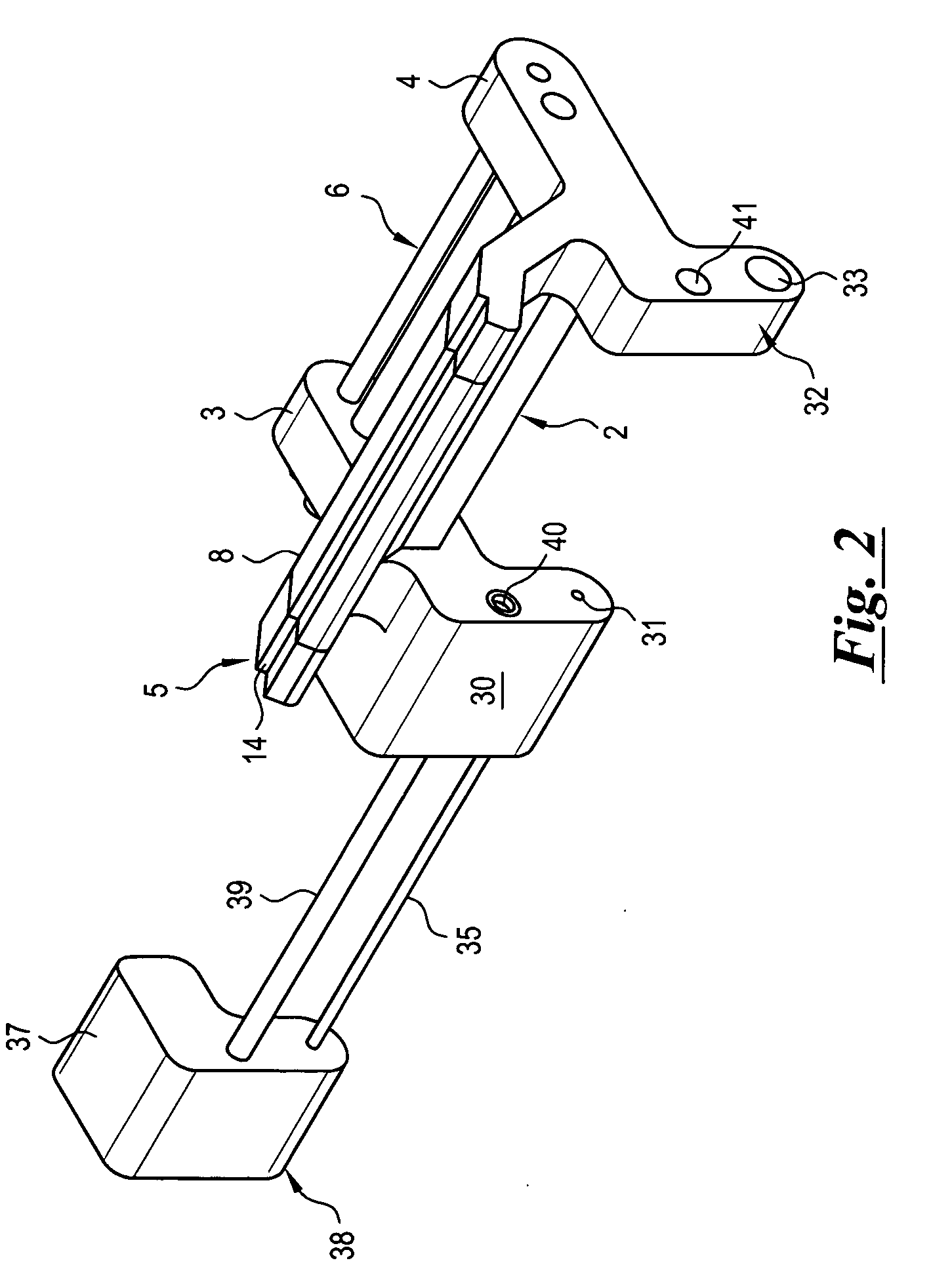Surgical suturing device, method and tools used therewith
- Summary
- Abstract
- Description
- Claims
- Application Information
AI Technical Summary
Benefits of technology
Problems solved by technology
Method used
Image
Examples
Embodiment Construction
[0050]FIG. 1 shows a preferred device 1 for the insertion of a suture as will be described more fully below. As is further illustrated in FIG. 2, the device 1 generally includes a body 2 attached to and extending between a pair of arms 3, 4 associated with opposing ends of the body 2.
[0051]A first alignment member 5 projects from the body 2, and cooperates with the body 2 to provide the resulting fixture with suitable rigidity and structural support. The alignment member 5 preferably cooperates with a second alignment member 6 to form a slide for adjustably receiving one or more housings 7. In addition to receiving the housings 7, the second alignment member 6 also provides the fixture with additional rigidity and structural support.
[0052]In the preferred embodiment illustrated, the alignment member 5 terminates in a flange 8 which extends fully along the alignment member 5. The alignment member 6 preferably takes the form of a rod extending between the arms 3, 4, and which defines ...
PUM
 Login to View More
Login to View More Abstract
Description
Claims
Application Information
 Login to View More
Login to View More - R&D
- Intellectual Property
- Life Sciences
- Materials
- Tech Scout
- Unparalleled Data Quality
- Higher Quality Content
- 60% Fewer Hallucinations
Browse by: Latest US Patents, China's latest patents, Technical Efficacy Thesaurus, Application Domain, Technology Topic, Popular Technical Reports.
© 2025 PatSnap. All rights reserved.Legal|Privacy policy|Modern Slavery Act Transparency Statement|Sitemap|About US| Contact US: help@patsnap.com



